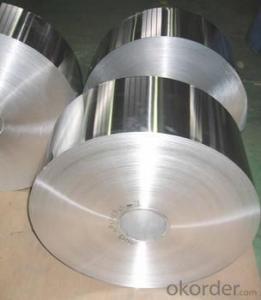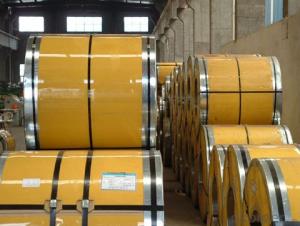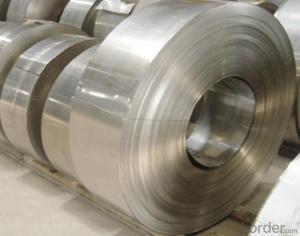Hot Rolled Steel Sheet for Shipbuilding and pipe
- Loading Port:
- Tianjin
- Payment Terms:
- TT OR LC
- Min Order Qty:
- 500 m.t.
- Supply Capability:
- 5000 m.t./month
OKorder Service Pledge
OKorder Financial Service
You Might Also Like
Item specifice
1. Product Description
The Billets as raw materials, through furnace heating, high-pressure water to reduce the phosphorus, then entering the roughing mill, cutting head, end, and then put into the finishing mill, cutting the edge, after the times of straightening, leveling and other finishing line treatment, and then cutting board or coil becomes the hot rolled steel sheet and hot rolled steel coil.
2. Main Features
Characteristics of hot rolled steel hot-rolled steel is a high temperature heating and rolled steel, hot rolled product has high strength, good toughness, easy to processing molding and good weldability and other excellent properties, which are widely used in ship, automobile, Bridges, buildings, machinery, pressure vessels and other manufacturing industries.
3. Excellent Product Image
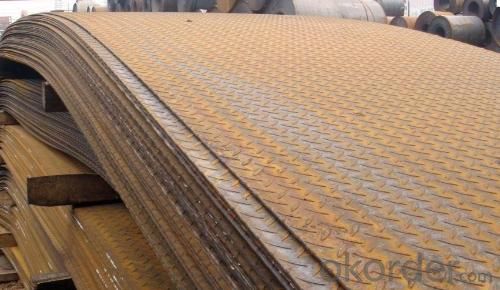
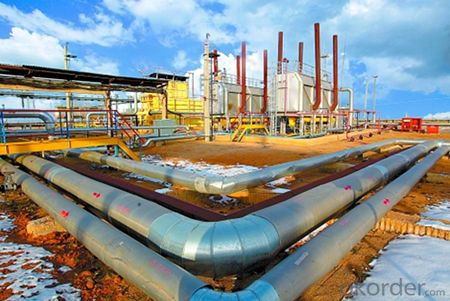
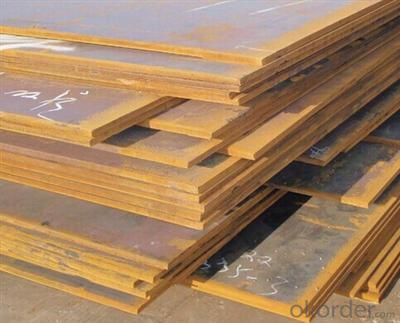
4. Application
Refers to the production according to the requirements of classification society rules for the construction of hot rolled steel plate used in the manufacture of hull structure.
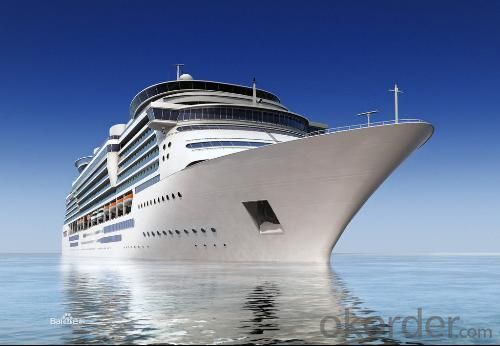
Because of poor working conditions, hull shell to chemical corrosion and electrochemical corrosion of sea water and sea creatures, microbial corrosion; Hull bear larger impact waves and alternating load; Ship shape the processing method of complex factors, so strict in hull structure steel. First good toughness is one of the most critical requirements, in addition, require high strength, good corrosion resistance, weldability, processing forming performance and surface quality. For assuring quality and ensure there is enough toughness and requirements of the chemical composition of the Mn/C above 2.5, also has strict requirements for carbon equivalent, and recognized by the survey department of steel production. Hull with structural steel in accordance with the minimum yield point strength level is divided into: general strength structural steel and high strength structural steel. General strength and high strength steel with hull structural steel points two kinds, general strength steel according to quality points A, B, D and E four grades; Strength of high strength steel and two levels and three quality grades; AH32, DH32, EH32, AH36, DH36, EH36.
China classification society standard the general strength of structural steel is divided into: A, B, D, E four quality levels (i.e., CCSA CCSB, CCSC, continental scientific drilling (CCSD); China classification society standard level of strength of high strength structural steel for three, four quality grade.
5. FAQ
1.Q: Do you have attended any exhibition?
A: We almost go to Canton Fair and Overseas Exhibitions every year.
2. Q: How to guarantee the quality of the products?
A: We have established the international advanced quality management system,every link from raw material to final product we have strict quality test;We resolutely put an end to unqualified products flowing into the market. At the same time, we will provide necessary follow-up service assurance.
3. Q: How long can we receive the product after purchase?
A: Usually within thirty working days after receiving buyer’s advance payment or LC. We will arrange the factory manufacturing as soon as possible. The cargo readiness usually takes 15-25 days, but the shipment will depend on the vessel situation.
Why choose us?
Pre-sale Service
1. Sample can be offered with sample charge and courier fee by buyer's side.
2. We have full stock,and can deliver within short time.Many styles for your choices.
3. OEM and ODM order are accepted, Any kind of logo printing or design are available.
4. Good Quality + Factory Price + Quick Response + Reliable Service, is what we are trying best to offer you
5. All of our products are produce by our professional workman and we have our high-work-effect foreign trust-worthy sales team.
6. We have 18 years' experience of design, manufacture and sell lingerie, we cherish every order from our honor.
After you choose
1. Count the most efficient shipping cost and make invoice to you at once.
2. Check quality again, then send out to you at 1-2 working day after your payment.
3. Email you the tracking no, and help to chase the parcels until it arrive you.
- Q:What are the different surface pickling options for steel strips?
- There are several surface pickling options available for steel strips, including acid pickling, alkaline pickling, and electropolishing. Acid pickling involves immersing the steel strips in an acid solution to remove surface oxides and impurities. Alkaline pickling uses an alkaline solution to clean the surface and remove contaminants. Electropolishing is an electrochemical process that smooths and cleans the surface of the steel strips. Each option has its own advantages and is chosen based on specific requirements and desired surface finish.
- Q:What are the different surface treatments for steel strips to improve hardness?
- There are several surface treatments available for steel strips to improve hardness, including heat treatment, case hardening, nitriding, and carburizing. Heat treatment involves subjecting the steel to high temperatures and then cooling it rapidly to increase hardness. Case hardening involves adding a hard outer layer to the steel through processes like carburizing or nitriding. Carburizing introduces carbon into the surface layer, while nitriding introduces nitrogen. These treatments enhance the hardness and wear resistance of the steel strips, making them suitable for various industrial applications.
- Q:How are steel strips used in the shipbuilding industry?
- Steel strips are used in the shipbuilding industry for various purposes such as constructing the hull, reinforcing structural components, and creating interior fittings. They are shaped and welded together to form the framework of the ship, providing strength, stability, and durability to withstand the harsh marine environment. Additionally, steel strips are used for fabricating decks, bulkheads, and other essential parts of the ship, ensuring its overall structural integrity.
- Q:What is the machinability of a steel strip?
- The machinability of a steel strip refers to its ease of being cut, drilled, or shaped using various machining processes such as milling, turning, or grinding. It is a critical property that determines the efficiency and effectiveness of these manufacturing processes. The machinability of a steel strip depends on several factors, including the alloy composition, microstructure, hardness, and surface finish. Certain elements and impurities in the steel, such as sulfur, phosphorus, and lead, can enhance or hinder its machinability. A steel strip with high machinability will exhibit excellent chip formation, reduced cutting forces, and longer tool life. It will allow for higher cutting speeds and feeds, resulting in faster production rates and improved productivity. Additionally, a highly machinable steel strip will generate minimal heat and produce less wear on cutting tools, thus reducing costs associated with tooling and maintenance. On the other hand, a steel strip with poor machinability will pose challenges during machining operations. It may exhibit excessive tool wear, increased cutting forces, and poor chip formation. This can lead to slower cutting speeds, reduced productivity, and higher costs due to frequent tool changes and maintenance. To enhance the machinability of a steel strip, various techniques can be employed, such as alloying with elements that promote machinability, heat treatments to modify the microstructure, and surface treatments to improve surface finish and lubricity. These methods aim to optimize the steel's properties and make it more suitable for specific machining applications. In summary, the machinability of a steel strip is a crucial characteristic that affects the ease, efficiency, and cost-effectiveness of machining processes. It is influenced by factors like alloy composition, microstructure, hardness, and surface finish, and can be enhanced through various techniques and treatments.
- Q:What are the common joining methods for steel strips?
- The common joining methods for steel strips include welding, soldering, and adhesive bonding.
- Q:Can steel strips be used in the production of automotive springs?
- Yes, steel strips can be used in the production of automotive springs. Steel strips are commonly used as a raw material in the manufacturing of various types of springs, including automotive springs. The high strength and durability of steel make it an ideal material for springs that need to withstand heavy loads and repetitive cycles of compression and extension. Steel strips can be shaped and formed into the desired spring configuration, providing the necessary flexibility and resilience required for automotive suspension systems. Additionally, steel strips can be heat-treated to further enhance their mechanical properties, such as hardness and tensile strength, making them suitable for automotive applications where reliability and performance are crucial. Overall, the use of steel strips in the production of automotive springs is a common and effective practice.
- Q:How do steel strips contribute to product cost-effectiveness in various applications?
- Steel strips contribute to product cost-effectiveness in various applications primarily due to their durability, versatility, and cost-efficiency. As a highly durable material, steel strips offer long-lasting performance, reducing the need for frequent replacements or repairs. Their versatility allows for customization and adaptation to various applications, eliminating the need for multiple materials. Additionally, steel strips are cost-efficient in terms of production, transportation, and installation, making them a cost-effective choice for a wide range of industries and products.
- Q:What are the common surface defect inspection methods for steel strips?
- There are several common surface defect inspection methods that are widely used for steel strips. 1. Visual Inspection: This is the simplest and most basic method of surface defect inspection. It involves a trained inspector visually examining the steel strips for any visible defects such as scratches, dents, cracks, or discoloration. While this method is subjective and relies on the inspector's skills and experience, it can still be effective for identifying major defects. 2. Magnetic Particle Inspection (MPI): MPI is a non-destructive testing method that uses magnetic particles to detect surface defects in steel strips. The steel strip is magnetized, and magnetic particles are applied to the surface. Any defects, such as cracks or discontinuities, will cause the magnetic particles to gather at these locations, making them visible to the inspector. 3. Ultrasonic Testing (UT): UT is another non-destructive testing method commonly used for inspecting steel strips. It involves the use of high-frequency sound waves that are transmitted into the steel strip. Any defects or discontinuities in the material will cause the sound waves to bounce back, creating echoes that can be detected and analyzed to identify surface defects. 4. Eddy Current Testing (ECT): ECT is a non-destructive testing method that uses electromagnetic induction to detect surface defects in conductive materials like steel. A coil carrying an alternating current is placed near the surface of the steel strip, creating eddy currents in the material. Any defects or changes in the material's conductivity will cause a variation in the eddy currents, which can be detected and analyzed to identify surface defects. 5. X-ray Inspection: X-ray inspection is a method that uses X-rays to detect surface and internal defects in steel strips. X-rays can penetrate the material and create an image of its internal structure. This method is particularly useful for detecting internal defects such as voids, inclusions, or delaminations that may not be visible by visual inspection. These are some of the common surface defect inspection methods used for steel strips. The choice of method depends on factors such as the type and size of defects, the required sensitivity, and the cost-effectiveness of the inspection.
- Q:How do steel strips handle high-pressure applications?
- Due to their inherent strength and durability, steel strips are highly suitable for high-pressure applications. The properties of steel, such as its high tensile strength and resistance to deformation, make it an ideal choice for handling high pressure. This ensures the integrity and safety of the application, as steel strips can withstand significant amounts of pressure without bending or breaking. Moreover, steel strips can be tailored to the specific requirements of high-pressure applications by manufacturing them to precise specifications. They offer versatility and flexibility in their use, as they can be produced in various thicknesses, widths, and lengths. Additionally, steel strips can be further processed or treated to enhance their resistance to corrosion, wear, or other environmental factors, ensuring their longevity and performance in high-pressure conditions. Furthermore, steel strips can be easily formed and manipulated into different shapes or designs, making them adaptable to various high-pressure applications. Their ductility allows for the creation of complex structures or components that can withstand the forces exerted by high pressure. In conclusion, steel strips are an excellent choice for high-pressure applications due to their strength, durability, versatility, and ease of customization. They provide reliable and efficient solutions for industries and sectors that require the handling of high-pressure environments, ensuring the safety and effectiveness of the applications they are used in.
- Q:How do steel strips resist corrosion?
- Steel strips resist corrosion through a process called corrosion resistance. This is achieved through a combination of factors including the composition of the steel, the presence of a protective coating, and the use of corrosion inhibitors. Firstly, the composition of steel strips plays a crucial role in their ability to resist corrosion. Steel is primarily made up of iron, but it also contains small amounts of other elements such as carbon, chromium, nickel, and manganese. These elements help to form a protective oxide layer on the surface of the steel, which acts as a barrier against corrosive substances. Furthermore, steel strips are often coated with a protective layer to enhance their corrosion resistance. Common coatings include zinc, which forms a protective barrier between the steel and the environment, and paints or epoxy coatings, which provide an additional layer of protection. These coatings not only prevent direct contact between the steel and corrosive substances but also act as a barrier against moisture, oxygen, and other corrosive agents. In addition to composition and coatings, corrosion inhibitors are often used to further enhance the resistance of steel strips. Corrosion inhibitors are chemical compounds that are added to the environment surrounding the steel to reduce the rate of corrosion. They work by either forming a protective film on the steel surface or by altering the chemical properties of the environment to make it less corrosive. Examples of corrosion inhibitors include chromates, phosphates, and organic compounds. Overall, steel strips resist corrosion through a combination of factors such as the composition of the steel, the presence of protective coatings, and the use of corrosion inhibitors. These measures work together to prevent the degradation of the steel's surface and ensure its longevity and durability.
1. Manufacturer Overview |
|
|---|---|
| Location | |
| Year Established | |
| Annual Output Value | |
| Main Markets | |
| Company Certifications | |
2. Manufacturer Certificates |
|
|---|---|
| a) Certification Name | |
| Range | |
| Reference | |
| Validity Period | |
3. Manufacturer Capability |
|
|---|---|
| a)Trade Capacity | |
| Nearest Port | |
| Export Percentage | |
| No.of Employees in Trade Department | |
| Language Spoken: | |
| b)Factory Information | |
| Factory Size: | |
| No. of Production Lines | |
| Contract Manufacturing | |
| Product Price Range | |
Send your message to us
Hot Rolled Steel Sheet for Shipbuilding and pipe
- Loading Port:
- Tianjin
- Payment Terms:
- TT OR LC
- Min Order Qty:
- 500 m.t.
- Supply Capability:
- 5000 m.t./month
OKorder Service Pledge
OKorder Financial Service
Similar products
New products
Hot products
Related keywords






















